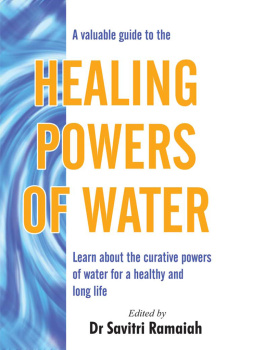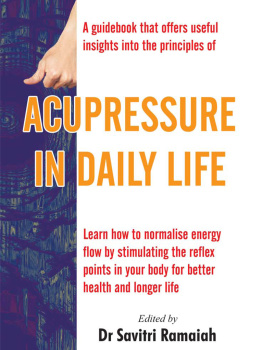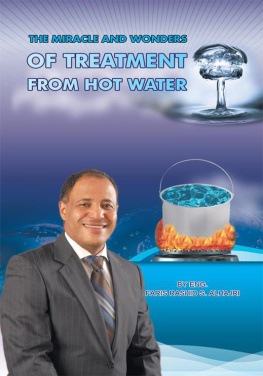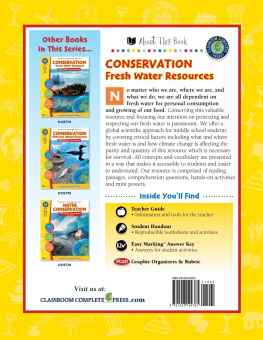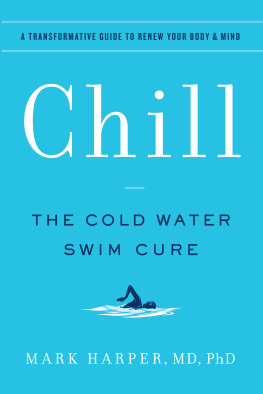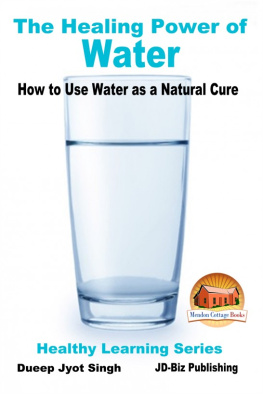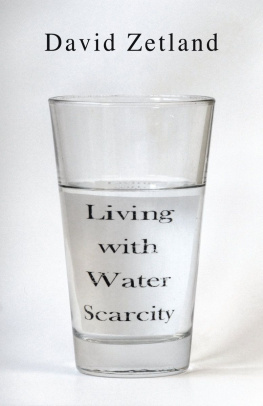Copyright
NEW DAWN
a division of Sterling Publishers (P) Ltd.
A-59, Okhla Industrial Area, New Delhi-110020
Ph.: 26387070, 26386209 Fax: 91-11-26383788
E-mail: ghai@nde.vsnl.net.in
Internet: http://www.sterlingpublishers.com
Healing Powers of Water
2003, Sterling Publishers Private Limited
ISBN 81 207 2634 0
All rights are reserved. No part of this publication may be reproduced,
stored in a retrieval system or transmitted, in any form or by any
means, mechanical, photocopying, recording or otherwise, without
prior written permission of the publisher.
About The Book
Water is one of the essential ingredients necessary to sustain life. It is a precious resource whose presence and benefits are often taken for granted.
The stress and strain of modern living has prompted people all over the world to turn to alternative methods of healing. Foremost among these methods is the use of water as a curative. Water helps to rid the body of toxic material and restore the balance of the system.
This book focuses on water-based therapies that can be used to treat various ailments. It offers invaluable guidelines for the management of major and minor diseases, and the promotion and maintenance of good health.
Preface
This book gives non-specific, general advice and should not be relied on as a substitute for proper medical constitution. The author and publisher cannot accept responsibility for illness arising out of the failure to seek medical advice from a doctor.
Introduction
We drink water when our body craves for it. There are several other indications of inadequate water in some or all parts of the body. Ignoring these indications can lead to major diseases that medicines may treat but not cure.
A cool sip of water lowers the body temperature, dilutes the blood to the required consistency, promotes excretion of poisons from the skin in the form of evaporation, stimulates the normal functions of the kidneys and increases movements of the intestines. Hot water works as a sedative, and relieves pains, cramps and spasms.
Water is a natural curative
01. Healing Powers Of Water
Most people believe that we feel thirsty whenever our body needs more water. While this is true, recent research studies have indicated that there are several other indicators of inadequate water in some or all parts of the body. Ignoring these indicators can lead to several major diseases that medicines may cure but not treat. Almost everyone knows that drinking adequate water is good for health. But most people do not understand why this is so and what exactly happens when the body does not get adequate water. This book focuses on the critical role of water in preventing several health problems, some of which can lead to major diseases. It also describes the various techniques of natural healing where water plays an important role.
Up to seventy per cent of the total body weight is due to water. Although it is present in all parts of the body, it is more in organs such as lungs and brain and fluids such as blood, lymph, saliva and secretions by the organs of the digestive system.
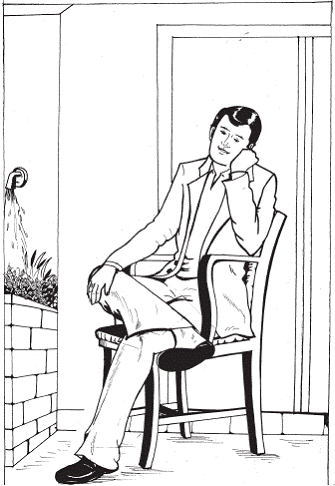
It is just water. I do not need it to remain healthy.
Water is available liberally in most places. There are two main sources of water underground and surface water. Normally, surface water is soft and underground water is hard. This means that the underground water has several minerals and/or compounds mixed in it. Soft water is more effective for therapeutic purposes as compared to hard water. It is however important to remember that impurities of soft water, if present, can adversely affect health. Therefore, it is necessary to purify water which will be used for drinking and for therapy.
For several centuries water has been an integral part of treatment of several diseases among the ancient Egyptians, Hebrews, Greeks, Persians and Hindus. The Chinese used water as a remedy several centuries before Christ. Japanese used cold water for treatment of several diseases almost eight hundred years ago. Hippocrates, father of modern medicine, also used hot and cold water successfully for management of diseases such as fever, ulcers, bleeding, inside or outside the body, etc.
Health and Water
How is the body water regulated?
Whenever there is water shortage in your house, you would prioritize the use of water for essential purposes. For example, you would use the necessary water for drinking and cooking but reduce the amount of water used for bathing, washing, etc. Similarly, when the body receives less water, histamine, a chemical compound present in all cells, initiates a system of water regulation. This system prioritizes the distribution of water to more important organs of the body such as brain, heart, lungs, etc.
Histamine directs and operates a system of chemicals called neurotransmitters. These chemicals either modify or transmit impulses in the nerves. Histamine directs some neurotransmitters to operate sub-systems to regulate water intake. These sub-systems use
chemical substances such as vasopressin and renin-angiotensin for regulating water intake and distribution.
Vasopressin is a hormone that increases reabsorption of water by the kidneys and therefore decreases the production of urine. Renin is an enzyme produced and stored in kidneys. Whenever the volume of blood decreases, renin initiates a series of chemical reactions that produce a chemical compound, angiotensin. Angiotensin results in contraction of the blood vessels of the kidneys and therefore reduces the rate of filtration of blood by the kidneys. Reduced filtration helps the body to retain more water.
There are three stages of water regulation of body at different stages of life. These include (a) before birth, (b) between birth and adolescence and (c) in adulthood. Before birth, the unborn baby sends signals to the mother if more water is required for its growth and development. Thus, although the unborn baby sends the signal, the mother experiences the effect. It is believed that morning sickness in a pregnant woman is the first indicator that the unborn baby needs more water.
Fig 1. Water regulation at different ages
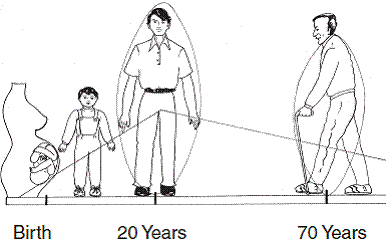
The water intake and thirst sensations at different ages Both reach peak at about 20 years and gradually decline as age advances.
Ratio of water content inside and outside the cells It is around 1.1 at 20 years and 0.8 by 70 years.
Water regulation efficiency of the body reaches the peak by the age of twenty years. Subsequently, it gradually declines from then. Thus, the thirst sensation gradually decreases as age advances. This is perhaps why chronic diseases such as arthritis, high blood pressure, etc, that are also attributed to inadequate intake of water, are more common in the older age group. The amount of tea, coffee, alcohol, aerated drinks etc you consume regularly may also adversely affect the water regulation in later life.
The ratio of the water content in and outside the cells of the various organs is very important. As age advances, water content in the cells decreases. Since the water content in each cell plays a vital role in maintaining its normal function, inadequate water can lead to loss of some functions. Loss of functions results in specific signs and symptoms. Figure 1 illustrates the water intake and thirst sensations and the ratio of water inside and outside the cells at different ages.

